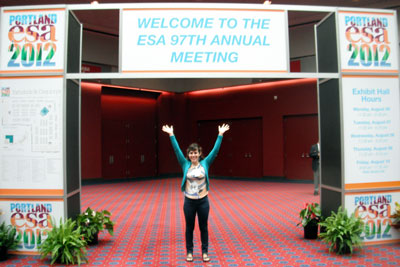CSIS student presents at ESA annual meeting
Add Summary

The caves of Puerto Rico teem with thousands of arthropods. New research from the Center for Systems Integration and Sustainability (CSIS) shows that the most commonly found type, Hemiptera, is notably different from other caves around the world.
Hemiptera arthropods include aphids, cicadas, hoppers and water bugs.
The research was presented by CSIS master’s student Miriam Toro Rosario in August at the 97th annual meeting of the Ecological Society of America in Portland.
 “The main purpose of our research was to gather baseline data on arthropod diversity and abundance in four caves that had various levels of human use,” Toro Rosario explained. “The dominance of Hemiptera in these caves is a departure from what’s been reported in other caves and we think future studies should focus on Hemiptera’s role as a potential indicator of change in the cave systems of Puerto Rico.”
“The main purpose of our research was to gather baseline data on arthropod diversity and abundance in four caves that had various levels of human use,” Toro Rosario explained. “The dominance of Hemiptera in these caves is a departure from what’s been reported in other caves and we think future studies should focus on Hemiptera’s role as a potential indicator of change in the cave systems of Puerto Rico.”
Toro Rosario and her colleague Elvia Melendez, of the Institute for Tropical Ecosystem Studies in Puerto Rico, also found that the warmer a cave’s temperature, the more diverse the arthropods in the cave were.
“Given the potential link between temperature and cave biota, future studies should explore using cave biota as potential indicators of change in cave systems, as well as how the cave ecosystems may respond to global warming in the Caribbean region,” Toro Rosario explained.
The researchers hope their work will be used to expand biodiversity conservation efforts in the caves and are contributing the digital photographs they took of the arthropods to local conservation groups.



 Print
Print Email
Email




